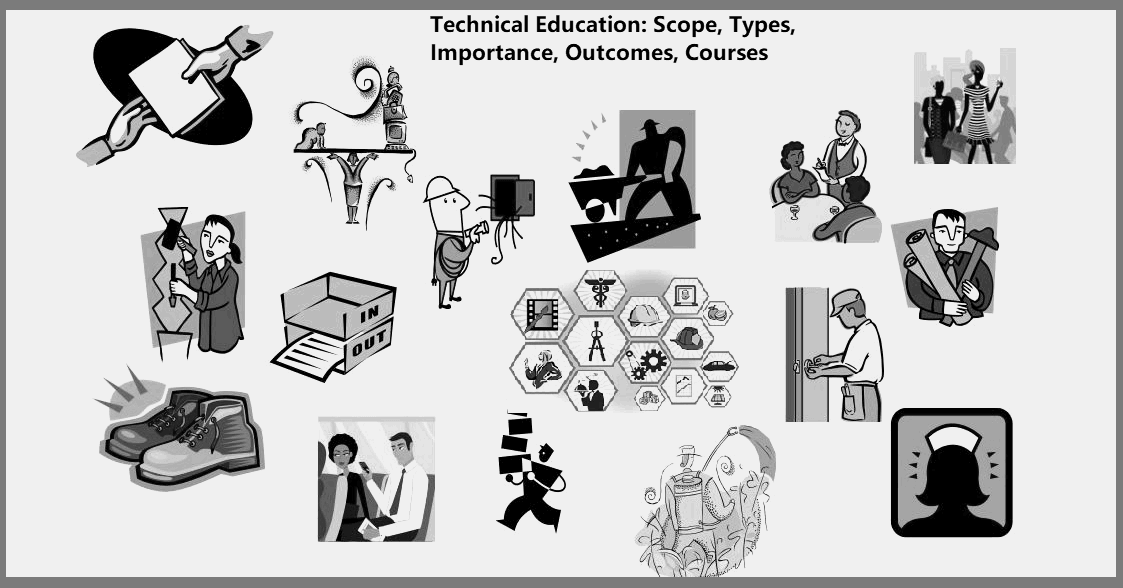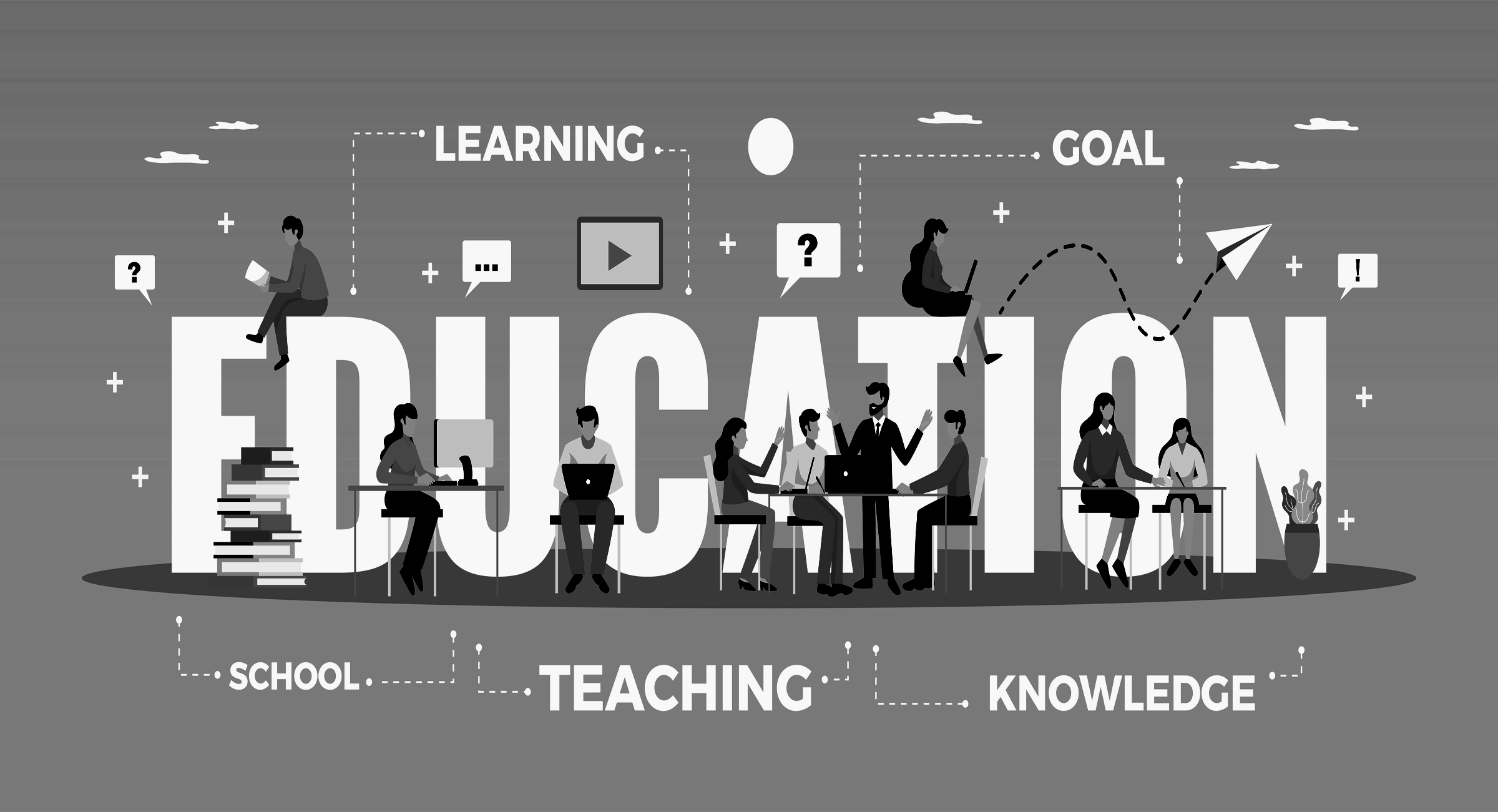
Technical education holds excellent potential for empowering individuals with the skills required for employment and entrepreneurship. Despite its importance, this sector in Nepal faces significant challenges, including outdated curricula, declining enrollment, inadequate practical training, and limited job opportunities for graduates. Addressing these issues is crucial for aligning technical education with the needs of individuals and the market. Here's a comprehensive look at how technical education in Nepal can be improved.
Table of Content
- What is Technical Education?
- A Brief History of Technical Education in Nepal
- Key Challenges and Solutions
- Enhancing Practical and Vocational Training
- Improving Governance
- Better Scholarship Distribution
- Reforming the Examination System
- Promoting Higher Education in Technical Fields
- Conclusion
What is Technical Education?

Technical education provides formal and informal training to provide individuals with the skills and knowledge needed for specific trades or professions. It enables people to:
-
Establish and manage businesses.
-
Compete in service and product markets.
-
Adapt to technological advancements.
-
Contribute to social inclusion and sustainable development.
Technical education drives economic growth and national development by fostering self-reliance and entrepreneurship. Nepal recognized this and began its technical education initiatives over 95 years ago.
A Brief History of Technical Education in Nepal

Nepal's journey in technical education began in 1930 with the establishment of the first technical school at Kumari Chowk. This initiative marked a significant step toward equipping individuals with the skills required for various trades. Over the years, the need for organized management and expansion led to the formation of the Technical Education and Vocational Training Council (CTEVT) in 1989. The council oversaw technical education, ensuring its growth aligned with the country's developmental needs.
One thousand five hundred ninety-one institutions offer technical education in Nepal, ranging from school-level technical streams to diploma programs and vocational training centers. However, the distribution of these institutions is unequal. Among Nepal's 753 local governments, 633 have at least one technical school or program, but 120 localities still lack access. This disparity shows the need for targeted efforts to ensure all regions benefit from technical education. Expanding reach to underserved areas and enhancing program availability can bridge these gaps and provide equitable opportunities for all learners.
Current Programs
Nepal's technical education system includes:
-
Diploma Programs: 32 three-year programs.
-
Pre-Diploma Programs: 26 courses.
-
School-Level Technical Streams: 6 programs.
-
Vocational Training: 311 short-term courses offering skills testing.
Key Challenges and Solutions
Outdated Curricula
Nepal's technical education system prioritizes supply over market demand. Many programs fail to address current industry needs, leading to low enrollment rates. In 2078 BS, only 54,871 students enrolled out of a capacity of 107,441, a utilization rate of 51%.
Solutions:
-
Conduct regular market demand analyses.
-
Update and diversify curricula to include emerging fields such as IT, food processing, and pharmaceuticals.
-
Introduce programs that combine learning with earning opportunities.
Shortage of Qualified Teachers
A lack of skilled teachers has negatively impacted technical education. For example, a pre-diploma program requires at least three teachers, but only 2.88 are available on average. Similarly, diploma-level programs need ten teachers, but only six are available, most in temporary roles.
Solutions:
-
Recruit teachers as per national standards.
-
Provide professional development opportunities, including refresher training every three years.
-
Monitor private institutions to ensure compliance with teacher qualification standards.
-
Inadequate Practical Training
Practical training is critical for technical education, yet many programs fail to provide it effectively. Short-term courses allocate only 34% of their time to practical training.
Solutions:
-
Make practical training mandatory and enforce compliance.
-
Partner with industries to provide hands-on training and internships.
-
Dedicate six months to practical training after grades 10 and 12 for school-level technical streams.
Low Retention and Completion Rates
Retention rates are concerning, with only 38% of students completing pre-diploma programs and 52% completing diploma programs. Similar trends are seen in school-level technical streams.
Solutions:
-
Revise curricula to make them more engaging and industry-relevant.
-
Focus on practical learning methods.
-
Collaborate with industries to guarantee job placements for graduates.
Limited Employment Opportunities
Employment rates for graduates are low: 29% for school-level graduates, 61% for pre-diploma holders, and 66% for diploma graduates.
Solutions:
-
Work with industries to create demand-specific programs.
-
Establish agreements with companies to guarantee job placements for graduates.
Lack of Entrepreneurship Training
Most technical education programs lack entrepreneurship courses, limiting graduates' ability to start their businesses and often pushing them to seek jobs abroad.
Solutions:
-
Incorporate entrepreneurship training into curricula.
-
Encourage self-employment by providing guidance and resources.
Uneven Access to Technical Education
Some regions lack access to technical education, leaving many students without opportunities.
Solutions:
-
Expand technical education facilities to underserved areas.
-
Use digital platforms to make education accessible nationwide.
Enhancing Practical and Vocational Training
To improve practical training, technical institutions should:
-
Partner with industries for internship opportunities.
-
Enforce the allocation of practical training hours.
-
Collaborate with trade organizations to provide real-world experience.
Improving Governance
The roles of federal, provincial, and local governments in managing technical education remain ambiguous, causing delays and inefficiencies in decision-making and program implementation. This lack of clarity leads to overlapping responsibilities, missed opportunities for collaboration, and uneven progress across regions. For example, while some local governments take the initiative in expanding technical education, others struggle due to limited resources and unclear guidelines from higher authorities.
Solutions:
-
Clearly define the responsibilities of each government level to ensure cohesive planning and implementation.
-
Develop a standardized framework that outlines specific federal, provincial, and local government roles in technical education management.
-
Establish regular coordination meetings among all government levels to address challenges and align strategies.
-
Encourage the use of digital tools to share data, monitor progress, and facilitate transparent communication among stakeholders.
-
Allocate resources equitably, ensuring underprivileged regions receive the necessary support to expand technical education opportunities.
Better Scholarship Distribution
Many scholarships remain unused due to inefficient distribution systems, limiting access for deserving students. For instance, in 2078 BS, only 75% of pre-diploma scholarships and a mere 27.5% diploma-level scholarships were utilized. This underutilization often stems from a lack of clear guidelines, awareness among potential beneficiaries, and streamlined processes.
Scholarships, intended to provide equitable opportunities for economically disadvantaged students, fail to serve their purpose when these barriers exist. Many eligible students in remote areas are unaware of the available schemes or find the application process cumbersome and inaccessible. Additionally, inconsistent monitoring and evaluation systems contribute to the problem, allowing funds to remain unutilized.
Solutions:
-
Revise scholarship distribution policies to focus on transparency and accessibility.
-
Launch awareness campaigns targeting underserved communities to inform students about available opportunities.
-
Simplify application processes through digital platforms, enabling students from all regions to apply quickly.
-
Implement robust monitoring mechanisms to ensure funds are allocated and utilized effectively.
Reforming the Examination System
The current examination system heavily emphasizes theoretical knowledge while overlooking the importance of practical skills. This imbalance has created a gap between academic achievements and the ability to perform in real-world settings. Many students graduate with high grades but lack the hands-on experience necessary to excel in their professions, limiting their employability and confidence in practical environments. Moreover, the assessment methods often fail to evaluate critical skills such as problem-solving, adaptability, and teamwork, which are essential in today's job market.
Solutions:
-
Shift to workplace-based evaluations that assess students' ability to apply their knowledge in practical settings.
-
Develop partnerships with industries to integrate real-life projects and internships during the examination process.
-
Introduce a credit transfer system that facilitates academic progression and recognizes prior learning or work experience.
-
Include assessments on practical problem-solving, teamwork, and innovation alongside traditional theoretical evaluations.
Promoting Higher Education in Technical Fields
Many graduates pursue higher education in non-technical fields, which often dilutes expertise in technical domains. This trend stems from limited opportunities for advanced education within technical disciplines and the perception that traditional academic pathways offer better career prospects. Such shifts weaken the technical workforce and hinder innovation and development in specialized technical fields.
Solutions:
-
Expand technical education to include advanced programs such as bachelor’s, master’s, and even doctoral degrees in technical domains. These programs can help retain talent within the sector and foster expertise.
-
Establish a National Vocational Qualification Framework to ensure seamless academic progression for technical students and allow them to build on their skills and qualifications.
-
Partner with international institutions to introduce globally recognized technical certifications and degrees, enhancing the quality and appeal of technical education.
-
Develop clear career pathways for technical graduates, emphasizing growth opportunities and long-term benefits. By showcasing success stories, more students can be encouraged to remain within technical fields.
Conclusion
Improving technical education in Nepal requires addressing its core challenges: outdated curricula, lack of qualified teachers, insufficient practical training, and limited employment opportunities. By modernizing programs, ensuring skilled faculty, and enhancing practical learning, technical education can better meet the needs of students and the market. Collaborative efforts among institutions, industries, and the government are essential to making technical education a cornerstone of Nepal’s development.
Education




